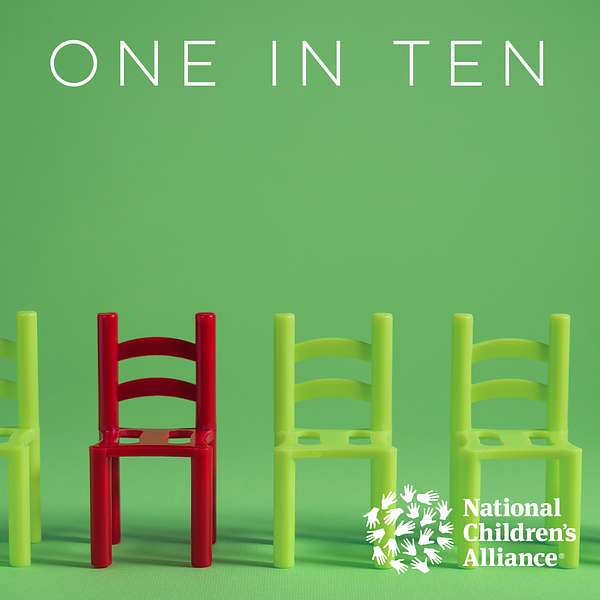
One in Ten
Engaging the brightest minds working to solve one of the world's toughest challenges—child abuse. Join us for conversations with leading experts on science, law, medicine, morality, and messaging. One in Ten is brought to you by National Children's Alliance, the largest network of care centers in the U.S. serving child victims of abuse. Our host is Teresa Huizar, NCA's CEO and a national expert on child abuse intervention and trauma treatment. Visit us online at nationalchildrensalliance.org.
One in Ten
Prediction as Prevention
Episode 107: In “Prediction as Prevention” we ask the question: Can big data help us determine which children are most at risk of foster care placement? And how do we direct resources to those children to ensure they’re safe? We examine the way in which predictive modeling sheds light on the impact of implicit bias in our nation’s child welfare system. About 50% of African-American and black families in this country will experience a child welfare investigation. That’s far, far more than the data indicates we should expect to see. That’s a problem. But can an algorithm be the answer? Emily Putnam-Hornstein, an associate professor at the University of Southern California School of Social Work and the director of Children’s Data Network, joined One in Ten to talk about what role big data should have in making potentially life-and-death decisions about children’s safety.
Topics in this episode:
· What is predictive analytics and how it is used in child welfare? (1:56)
· The big question to answered by big data. (3:52)
· The over-representation of black families in child welfare investigations. (5:31)
· Who gets reported? (6:58)
· Why haven’t we solved this problem yet? (10:01)
· Can individuals accurately assess risk? (12:24)
· How can predictive analytics address implicit bias? (15:24)
· How does it work in practice? (19:38)
· The impact of predictive analytics. (23:58)
· What’s next for the field? (28:48)
· Our next episode topic. (32:20)
Links:
USC Suzanne Dworak-Peck School of Social Work
The conference mentioned is NCA’s 2019 Leadership Conference. Emily Putnam-Hornstein and Rhema Vaithianathan led a plenary session about how risk modeling can support child welfare practice.
The question of who reports suspected abuse (or why they don’t) was the subject of our third episode, The Bystander Effect, with Dr. Wendy Walsh of the Crimes Against Children Research Center.
“Can big data help prevent child abuse and neglect?” by Giles Bruce at the USC Annenberg Center for Health Journalism, talks about Emily Putnam-Hornstein’s work (June 24, 2019).
Our next episode will feature Françoise Mathieu of TEND Academy.
Did you like this episode? Please leave us a review on Apple Podcasts.
